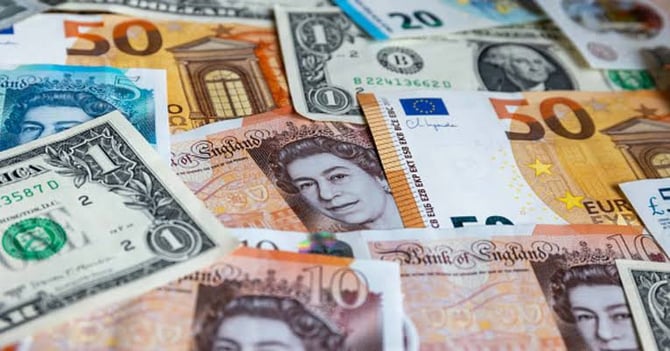The British Pound Suffers Worst Month for a Year

The British pound suffered its worst month against the U.S. dollar for a year in September, with analysts painting a gloomy future picture, as growth expectations weaken once again.
The Sterling fell 3.75% against the dollar through the month, a decline not seen since the end of last summer when the currency was first rocked by then Prime Minister Liz Truss’ disastrous mini-budget.
The pound also slid 1.26% against the euro last month, notching its weakest performance since December 2022.
Exchange rates have been impacted over the past two years by interest rate expectations, with higher rates generally making a currency more attractive for foreign investment.
Market expectations for peak U.K. interest rates rose as high as 6.5% over the summer, as the country battled sticky inflation, while consumer prices began to cool in other developed economies.
What does this mean for me?
The Bank of England (BOE) paused its run of 14 consecutive rate hikes in September, keeping its key rate at 5.25% — a level that economists and market watchers were quick to suggest likely represented its peak.
Analysts feel that among the G10 central banks, the BOE is in the most difficult position as it must balance an increasingly weaker growth outlook with very sticky high inflation. Research groups forecast a fall in the pound to $1.20 by the end of the year. This is because of the global landscape rather than because of expectations of lower interest rates against the U.S. or eurozone.
More News
.webp)
US Dollar Faces Biggest 6-Month Drop in Half a Century
4 months ago
.webp)
Dollar Slips to Three-Year Low as Trump Eyes Early Fed Appointment
4 months ago
.webp)
AI-Powered Trading Bots Bring a New Kind of Threat
6 months ago
.WEBP)
Euro Value Surges as Markets React to Tariff Shock
7 months ago

Euro’s Slide: What’s Behind the Drop and What’s Next?
10 months ago

Sterling Gains Against Euro as Central Banks Move Apart
11 months ago

Euro Remains Steady Amid Tariff Threats
11 months ago

Euro Stays Under Pressure Amid Economic and Political Shifts
1 year ago